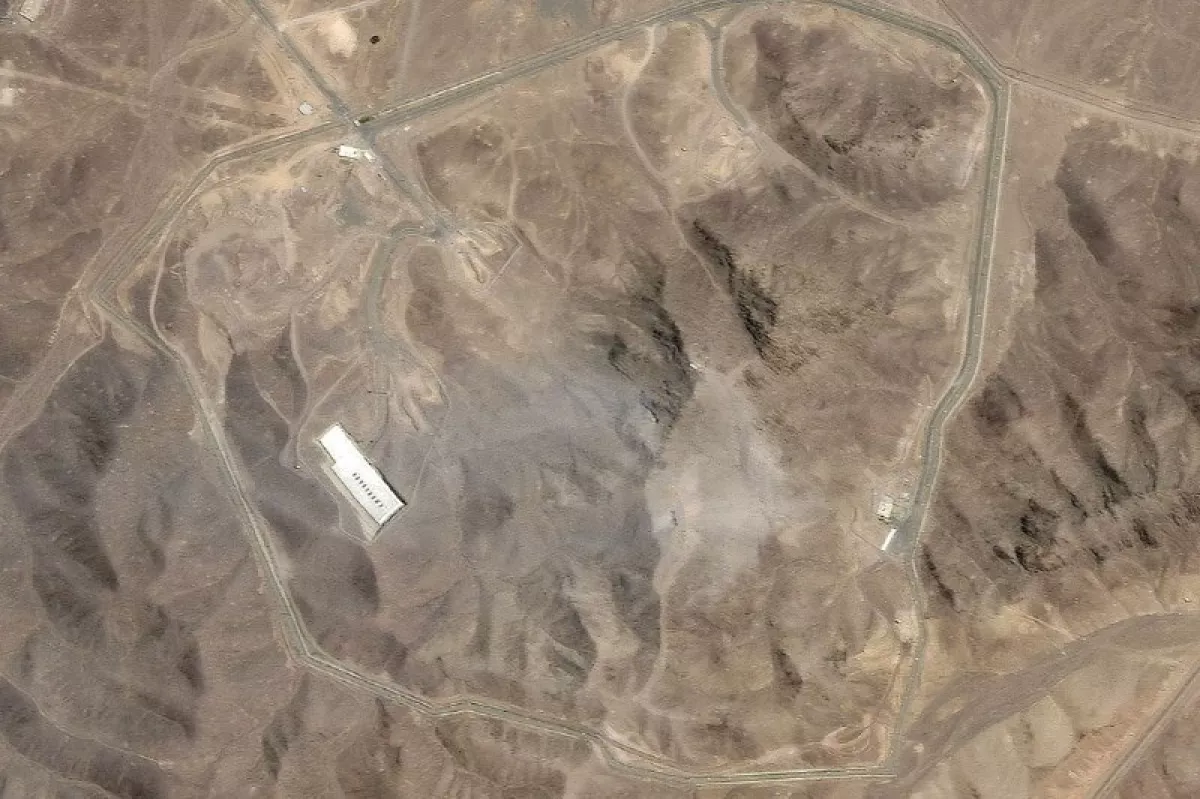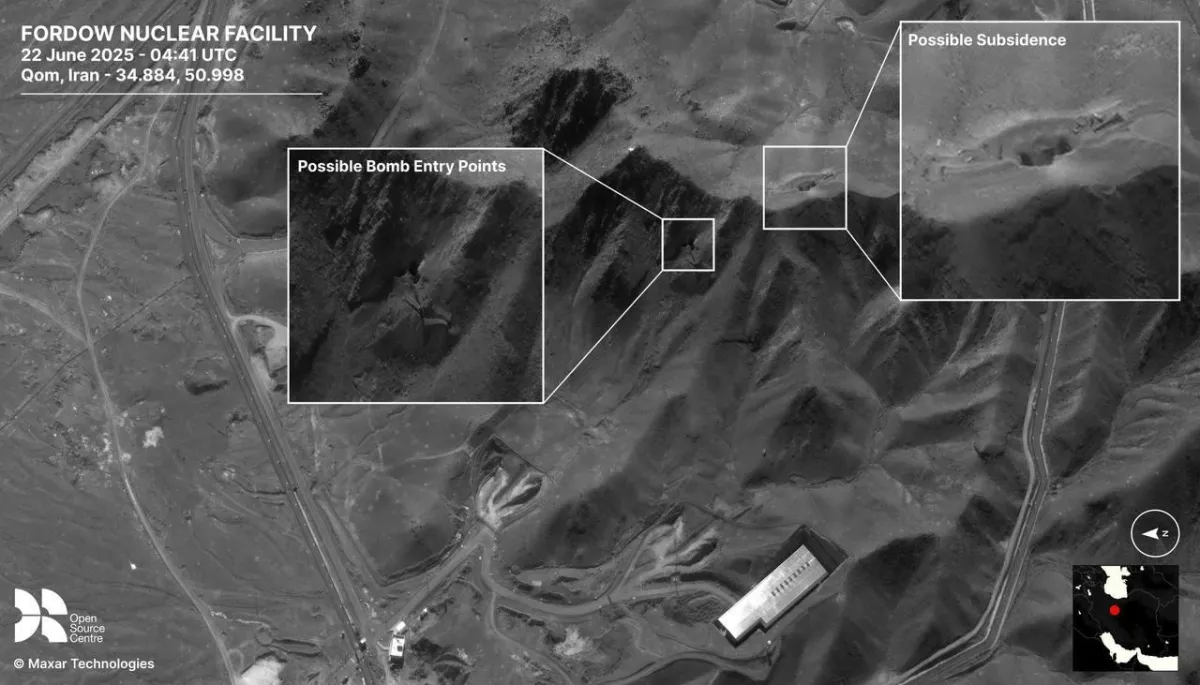Satellite images reveal crater damage at Iran’s Fordow nuclear site after US strike PHOTO
Initial satellite imagery of Iran’s Fordow nuclear facility, targeted in a recent U.S. airstrike, reveals at least two clearly distinguishable impact craters on the surface.
According to preliminary assessments, the damage may have resulted from the use of American GBU-57 bunker buster bombs, Caliber.Az reports.
Experts have not yet been able to determine the full extent of the damage or how deeply the munitions penetrated the underground levels of the facility, where key enrichment equipment is believed to have been located. Analysts continue to examine incoming data to assess the scale of destruction.
The already tense situation between Israel and Iran, which is in its 10th day on June 22, deteriorated sharply as US President Donald Trump announced late on June 21 that American forces conducted airstrikes on three key Iranian nuclear facilities: Fordow, Natanz, and Isfahan. The attacks, described by Trump as a “spectacular military success,” aimed to dismantle Iran’s nuclear enrichment capabilities, which the US and Israel claim pose a severe threat to global security.
The US operation involved B-2 Spirit stealth bombers deploying GBU-57 Massive Ordnance Penetrators (MOPs), 30,000-pound “bunker-buster” bombs designed to penetrate deeply buried targets. The primary target, Fordow, is a heavily fortified uranium enrichment facility located 300 feet beneath a mountain south of Tehran, making it one of Iran’s most secure nuclear sites. Six B-2 bombers dropped a dozen MOPs on Fordow, while US Navy submarines launched 30 Tomahawk cruise missiles at Natanz and Isfahan, according to US officials. Trump claimed the strikes “completely and totally obliterated” Iran’s key nuclear enrichment facilities.
By Khagan Isayev










